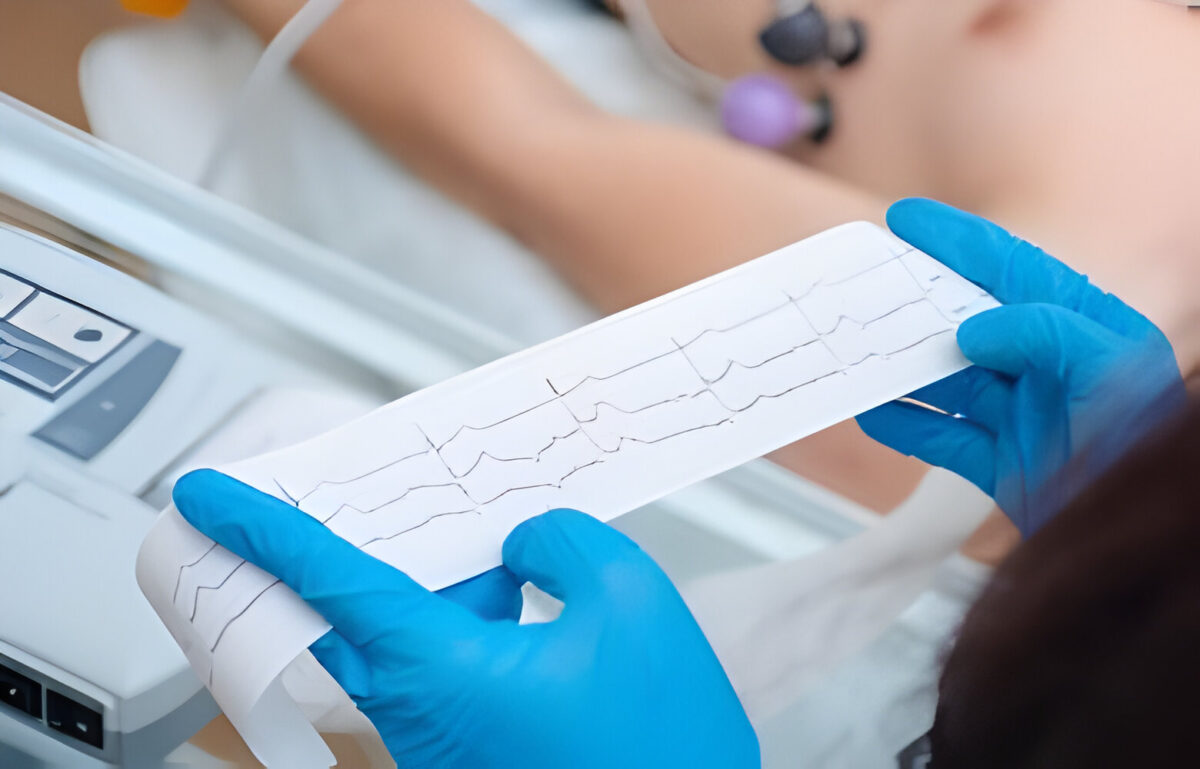Your heart has different rhythms it can beat to. Sometimes, things can go haywire, especially in the ventricles. These are the lower chambers of the heart.
When we talk about ‘monomorphic’ ventricular tachycardia, Think of it like this: when your heart’s rhythm is fast, the electrical signals come from one spot in the ventricles. On the other hand, the polymorphic ventricular tachycardia is chaotic.
This does not have multiple areas in the ventricles. Both of these kinds, especially the polymorphic one, need urgent attention. It is crucial to understand the differences that help doctors assess the best way to get the heart’s rhythm back on track. Keep reading to explore polymorphic versus monomorphic ventricular tachycardia.
Master ACLS Now
Get ACLS certified with confidence
What are the common symptoms?
Several symptoms may be present, which can cause suffering. These can include shortness of breath, dizziness, chest pain, and fatigue. You need to determine whether the tachycardia causes underlying physiological changes. Patients are likely to show serious symptoms as the heart rate exceeds 150 per minute. It is crucial to offer immediate treatment during hemodynamic instability.
If treating more immediate causes is not as successful, the ethics can be due to serious causes. This includes myocardial schema, electrolyte imbalances, and intoxication.
Read more: In Depth: Narrow Complex Tachycardia
How to identify patterns?
Examining the behavior and morphology pattern assists you in determining the type of wide QRS tachyarrhythmia you have experienced. Keep reading to know more about monomorphic vs polymorphic vtach patterns:
- Monomorphic ventricular tachycardia
Monomorphic ventricular tachycardia has QR complexes that are greater than or equal to.12 second (120 milliseconds). These complexes are uniform and symmetrical. The impulses and/or circuitry cause complexes to originate in the same area surrounding the ventricle.
- Polymorphic ventricular tachycardia
Polymorphic VT has QRS complexes greater than or equal to.12 second. The QRS complexes are wider or higher as compared to monomorphic. As the electrical impulses and circuitry originate in several locations within the ventricles, the QRS morphology is asymmetrical.
How to determine treatment?
So how to determine monomorphic vs polymorphic v tach? Treatments require assessing the condition of the patients and the appearance of the QRS. Once the assessment is over, you can determine the treatment options based on several decisions covered in the ACLS tachycardia algorithm.
Stable or unstable?
You must determine whether the patient is stable or unstable. ‘Unstable’ ranges from signs of adequate perfusion to no output in cardiac activity. If you are a patient made unstable by the onset of arrhythmia, then you must receive immediate counter-shock. Do not waste any time terminating a life-threatening arrhythmia.
Find out the symptoms: If the patient is stable, you must find out whether the symptoms are caused by tachycardia or any other condition. Then, treat this cause. Do this by monitoring the airway of the patient and the oxygenation status. Be very mindful of using proper equipment if the patient needs to support the oxygenation or respiratory level.
Stable, broad QRS tachycardias
Administer oxygen whenever indicated. Establish IV access and obtain 12 leaves. However, if you find that the condition is unstable, then administer cardioversion immediately.
What are the treatment methods?
Here are the common treatment methods:
Electrical cardioversion
This is most preferable when treating broad QRS tachycardias and is best used in the “synchronized” mode of cardioversion. The therapy energy in this mode is discharged upon identifying a QRS complex by the device. The rationale for this action is to get out of the ‘relative refractory period’ of the cycle and minimize the chances of inducing VF. This seems to be more effective when the heart rate is lower (<150 bpm), depending on the individual heart rate range.
If the use of synchronized mode results in a delay in the electrical conversion of a patient who has what is considered an unstable and life-threatening arrhythmia, you must deliver the shock without delay. Deliver using the unsynchronized mode.
Identify the recommended energy setting for the energy delivered. Therefore, it can be concluded that the broad QRS regular antiarrhythmic rhythms need less than 360J therapeutic energy for cardioversion. On the other hand, broad QRS irregular rhythms such as atrial fibrillation would need greater than or equal to 720 J therapeutic energy to bring about cardioversion. If fresh attempts at cardioversion are not successful, then defibrillate VF electrically. If the synchronizer circuit is activated, give it a command to turn it off. Then proceed to administer a countershock with the correct therapeutic energy.
Read More: Atrial Fibrillation (Afib) in Acls: Causes, Symptoms, and Treatment
Conclusion
To conclude, monomorphic and polymorphic broad QRS tachycardias occur frequently. For polymorphic versus monomorphic ventricular tachycardia, it can be challenging to differentiate QRS VT from SVT. It is, however, crucial to understand that both share a commonality in patients with an unstable response to the arrhythmia. The actual diagnosis is possible for the cardiologist-electrophysiologist.







